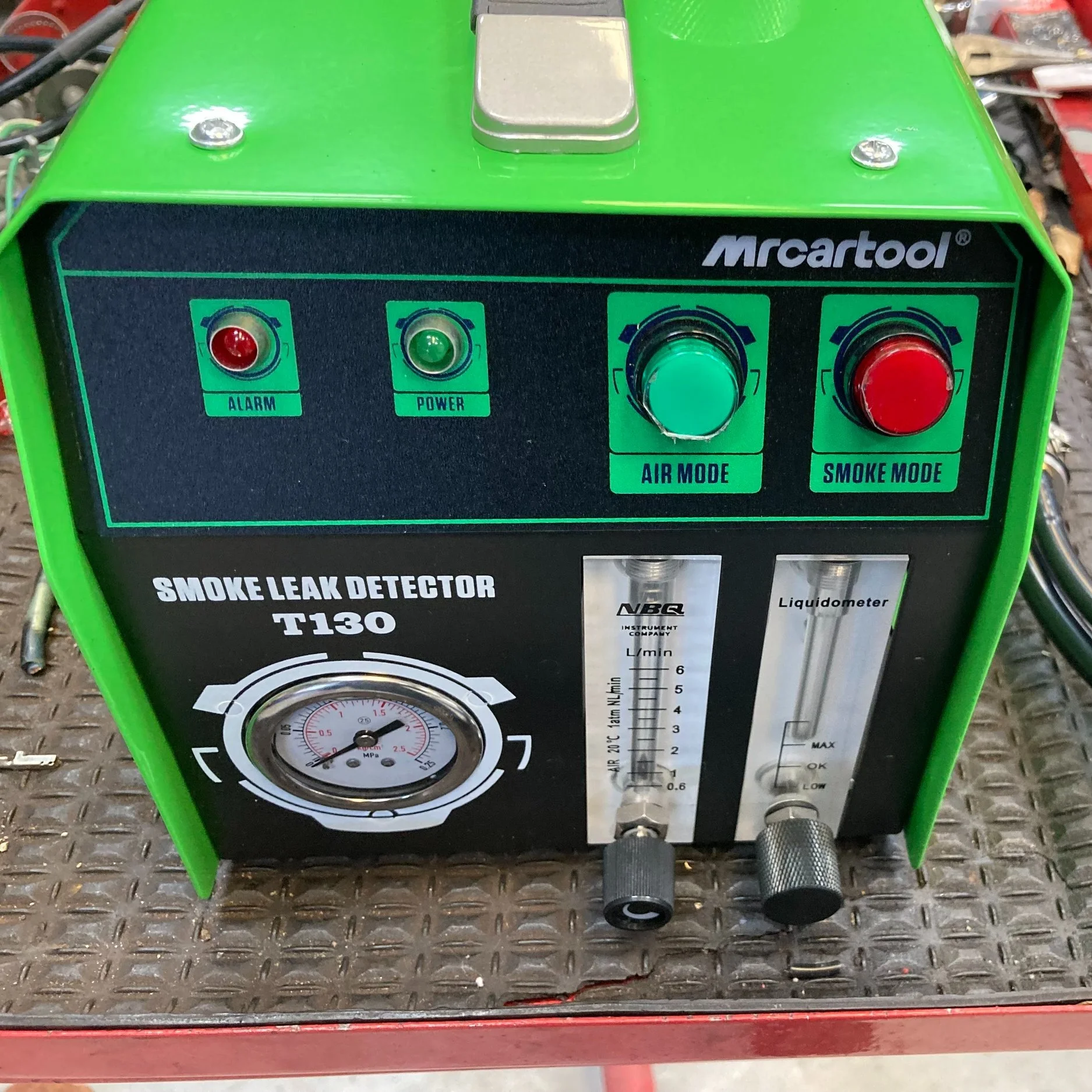Using a Smoke Machine to find EVAP leaks
Pictured above is a smoke machine.
Affiliate Disclosure: As an Amazon Associate, we may earn commissions from qualifying purchases from Amazon.com.
Here is a list of tools I use every day at the shop. Let me know if you use them too in the comments!
Finding an EVAP leak can be a total headache.
EVAP Leaks can range from very small to large, and without the correct tools, can be hard to find.
This is where a smoke machine comes in handy.
A smoke machine has many applications in the automotive field.
They can be used for vacuum leaks, exhaust leaks, and of course EVAP leaks.
After verifying that you indeed have an EVAP leak. Click here to learn more about EVAP leaks.
It is time to hook up the smoke machine.
The first step is to find the EVAP service port if it has one. It is usually indicated by a green gap.
If it does not have an EVAP service port, you can usually connect the smoke machine to the gas cap with the proper adapter or the hose connected to the purge valve.
Note: Be aware, when connecting with a gas cap adapter, you may be missing the leak if the vehicle has a faulty gas cap.
Connect the smoke machine.
Pictured above is a smoke machine connected to a purge valve hose.
The EVAP system has to be completely sealed for the smoke test to work properly.
The best ways to seal off the EVAP system are:
Using bi-directional controls to command the EVAP system shut.
Using plastic clamps to block off hoses like the EVAP vent valve hose.
Fill the EVAP system with smoke from the smoke machine.
Monitor the different components that could potentially leak.
Hoses
Fuel vapor lines
Fuel filler neck
Vent valve
Charcoal canister
Purge valve
Gas cap
When you see smoke, you have found your leak!
For more information on tools for EVAP problems, check out this article.
Pictured above is an example of smoke coming from a gas cap.
Disclaimer and Disclosure:
Due to factors beyond the control of DiagnosticMechanic.com, it cannot guarantee against unauthorized modifications of this information, or improper use of this information. DiagnosticMechanic.com assumes no liability for property damage or injury incurred as a result of any of the information contained in this website. DiagnosticMechanic.com recommends safe practices when working with power tools, automotive lifts, lifting tools, jack stands, electrical equipment, blunt instruments, chemicals, lubricants, or any other tools or equipment seen or implied in this website. Due to factors beyond the control of DiagnosticMechanic.com, no information contained in this website shall create any express or implied warranty or guarantee of any particular result. Any injury, damage or loss that may result from improper use of these tools, equipment, or the information contained in this website is the sole responsibility of the user and not DiagnosticMechanic.com.
DiagnosticMechanic.com is a participant in the Amazon Services LLC Associates Program, an affiliate advertising program designed to provide a means for sites to earn advertising fees by advertising and linking to Amazon.com. In many of our case studies, articles, and tool reviews, we may earn a small commission when readers purchase products through our links.






